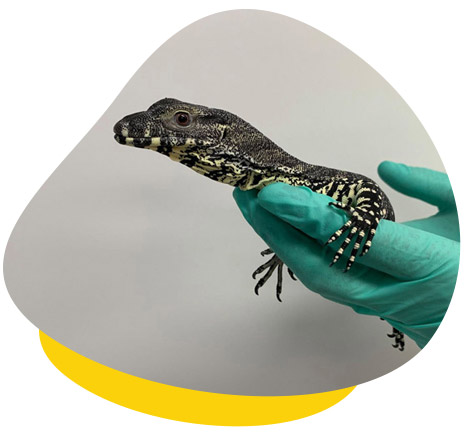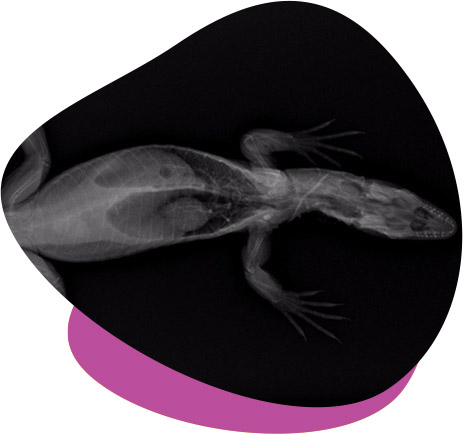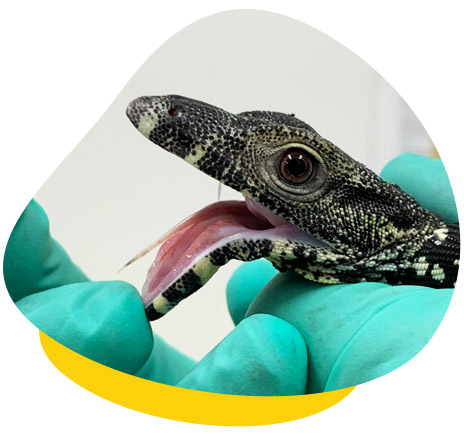| Date | January 2020 |
| Clinic | Jindalee, Brisbane |
| Species | Lace Monitor |
| Medical Condition | Nutritional Metabolic Bone Disease |
| Outcome | Improving With Nutritional Support |
Case Details
Rogue is a juvenile lace monitor that presented with a severe case of Nutritional Secondary Hyperparathyroidism, also known as Nutritional Metabolic Bone Disease (MBD).
Rogue had a reduced appetite and was having trouble with hind leg movement. Rogue also had a classic symptom of MBD known as ‘rubber jaw’ which occurs when the calcium stores within the bones are so depleted that they become ‘rubbery’.

What’s the Cause?
The most common cause of Nutritional Secondary Hyperparathyroidism is lack of UVB (artificial or natural), decreased calcium levels in the diet or a combination of both.
After a detailed history was taken, a few issues were identified. Although a UVB source was provided to Rogue, the diet was made up mostly of meat. The meat itself does not contain enough calcium for a growing monitor.
In addition to bone health, calcium is also needed for the normal function of the digestive tract, immune system, nerves and muscles. Low calcium levels can result in secondary issues such as gastric impaction, muscle twitching, as well as heart problems.
Radiographs were taken to get a baseline for us to monitor the bone density as Rouge hopefully recovers. Calcium was initially administered to Rogue by injection to reduce the neurological signs and was then continued as an oral solution.

What Was the Treatment?
Due to the softness of the jaw bones, a soft supplemental food was given to help with the nutritional deficiencies. This also makes it easier to digest, as solid prey could potentially have caused inadvertent fractures of the jaw, and would have been harder for the digestive system to process when not functioning optimally.

The Importance of a Balanced Diet
Rogue’s case illustrates the importance of assessing the optimal diet and husbandry requirements for the different species we can keep in captivity.
For monitors, feeding a balanced diet that contains whole prey is recommended to ensure their nutritional requirements are met. In some cases, the addition of supplements may be required, and this should be discussed with your reptile vet.
Thank you to Rogue’s owner for allowing us to share and publish this case, as it is an important educational piece.
For more information on Nutritional Metabolic Bone disease, reach out to your local Unusual Pet Vets team

